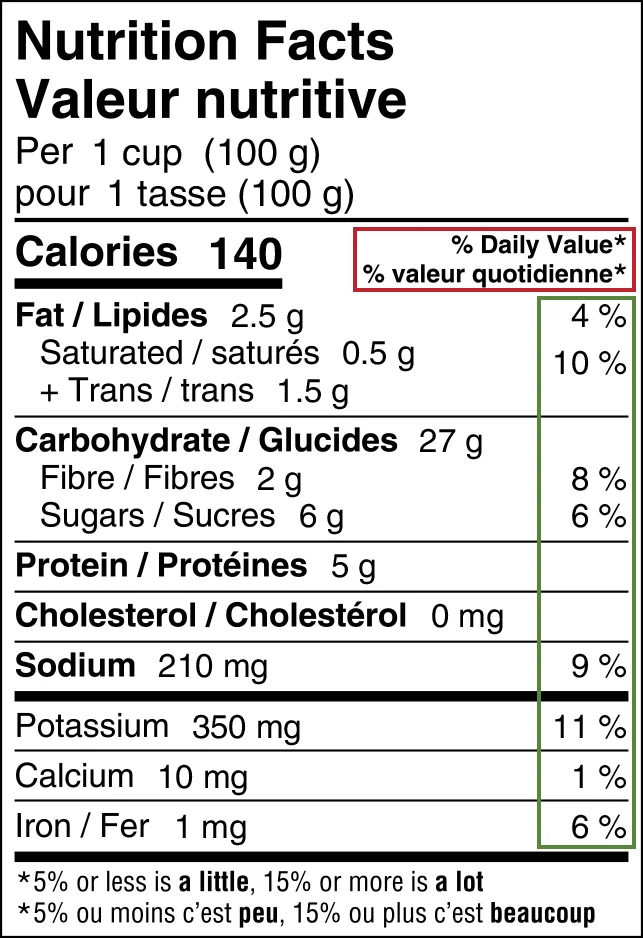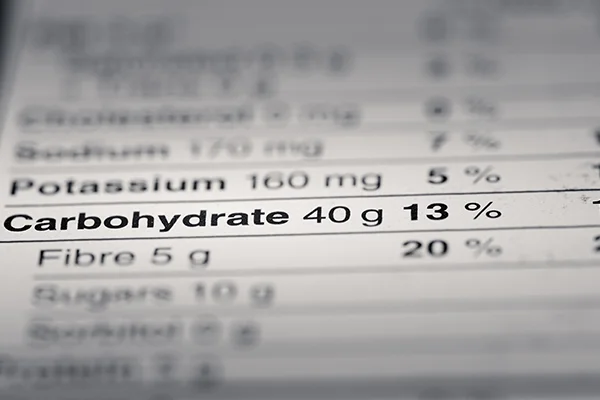The Daily Value (DV) on nutrition facts labels play a vital role for businesses in the food and beverage industry by ensuring regulatory compliance, fostering consumer trust, and serving as a powerful marketing tool. Accurate and precise DVs help companies avoid legal issues and build brand reputation and loyalty by promoting transparency. Additionally, understanding and leveraging DVs can guide product development towards healthier offerings, differentiate products in a competitive market, and educate consumers, ultimately enhancing customer experience and driving sales.
For consumers, the Daily Value (DV) on a food label represents the recommended amount of a nutrient that should be consumed daily based on a 2,000-calorie diet. This information is crucial for helping consumers understand the nutritional content of their food. The DV helps individuals make informed decisions about their diet and maintain a balanced intake of essential nutrients.
Interpreting Daily Value Percentages on Labels
According to the FDA
The Food and Drug Administration FDA published a general guide regarding the daily value of nutrition facts labels. If the Daily Value (%DV) is 5% or less of a nutrient per serving, it is considered low; 20% or more is considered high.
According to the CFIA
The Canadian Food Inspection Agency (CFIA) published a similar guide. It states that the % DV is a quick reference to tell you if a food product contains a little or a lot of a certain nutrient:
- 5% DV or less is a little
- 15% DV or more is a lot

Read more: Creating Compliant Nutrition Fact Labels in Canada
The Role of Daily Value on Food Labels
Daily Value percentages are provided on food labels to indicate how much a serving contributes to the daily diet. These percentages are based on the Recommended Daily Intake (RDI) and the Daily Reference Values (DRV). RDIs are established for vitamins and minerals, while DRVs are set for macronutrients like fat, cholesterol, sodium, carbohydrates, and protein.
Understanding these values helps businesses create and market products that align with nutritional guidelines. This knowledge allows businesses to formulate products that meet consumers’ health expectations and regulatory standards. By highlighting these nutritional benefits, companies can effectively market their products as healthier options, appealing to health-conscious consumers and differentiating themselves in a crowded marketplace.
How Daily Value is Calculated
The calculation of Daily Value is based on scientific data and dietary guidelines. The Food and Drug Administration (FDA) determines the DVs, ensuring they reflect current nutritional science and public health needs. The %DV is calculated by dividing the nutrient amount in a serving by the recommended daily amount, then multiplying it by 100.
The CFIA, however, calculates the percentage of the daily value for a mineral nutrient shown on the Nutrition Facts table (NFt), which is established based on the amount, by weight, of the mineral nutrient per serving of stated size for the product.

Read more: Creating US-Compliant Nutrition Fact Labels
Importance of Daily Value Percentages
Understanding the DV percentages on food labels can help businesses:
- Identify Nutrient-Rich Ingredients: Utilizing ingredients with high DV percentages of vitamins, minerals, and other beneficial nutrients can enhance the nutritional profile of products.
- Avoid Excessive Nutrients: Monitoring DV percentages helps prevent the inclusion of excessive amounts of saturated fats, cholesterol, and sodium in food products, aligning with health guidelines and consumer preferences.
- Plan Balanced Menus: Restaurants can use DV information to design menus that meet nutritional needs without exceeding recommended limits, attracting health-focused customers.
Read more: Cost-Effective Solutions for Creating FDA-Compliant Nutrition Labels
What does %DV mean for Food Manufacturers?
By highlighting the DV percentages of key nutrients, businesses can better market their products to retailers and wholesalers looking to stock nutritious options. Additionally, food manufacturers can use DV information to educate their clients and customers. Providing detailed nutritional information and emphasizing DV’s importance can enhance a company’s reputation for transparency and health advocacy. This will potentially lead to increased customer loyalty and sales.
Read more: FDA Guidelines for Nutrition Fact Label Sizing
Daily Value and Menu Planning
Designing menus highlighting nutrient-dense options can attract a growing demographic of health-focused customers.
Understanding a food label’s “Daily Value” is essential for making informed dietary choices and developing products that meet consumer needs. By paying attention to the %DV, food manufacturers and restaurants can create nutrient-rich products, avoid excessive intake of harmful nutrients, and plan balanced, healthy offerings. Staying informed about these values helps promote better overall health and well-being.
MenuSano is an easy-to-use software designed for food businesses to analyze recipes, calculate nutrition facts, and create precise nutritional labels that meet regulatory standards. It simplifies compliance processes and offers consumers clear, detailed information about the nutritional content of products, including added sugars.
Start your free trial today or schedule a demo!



















